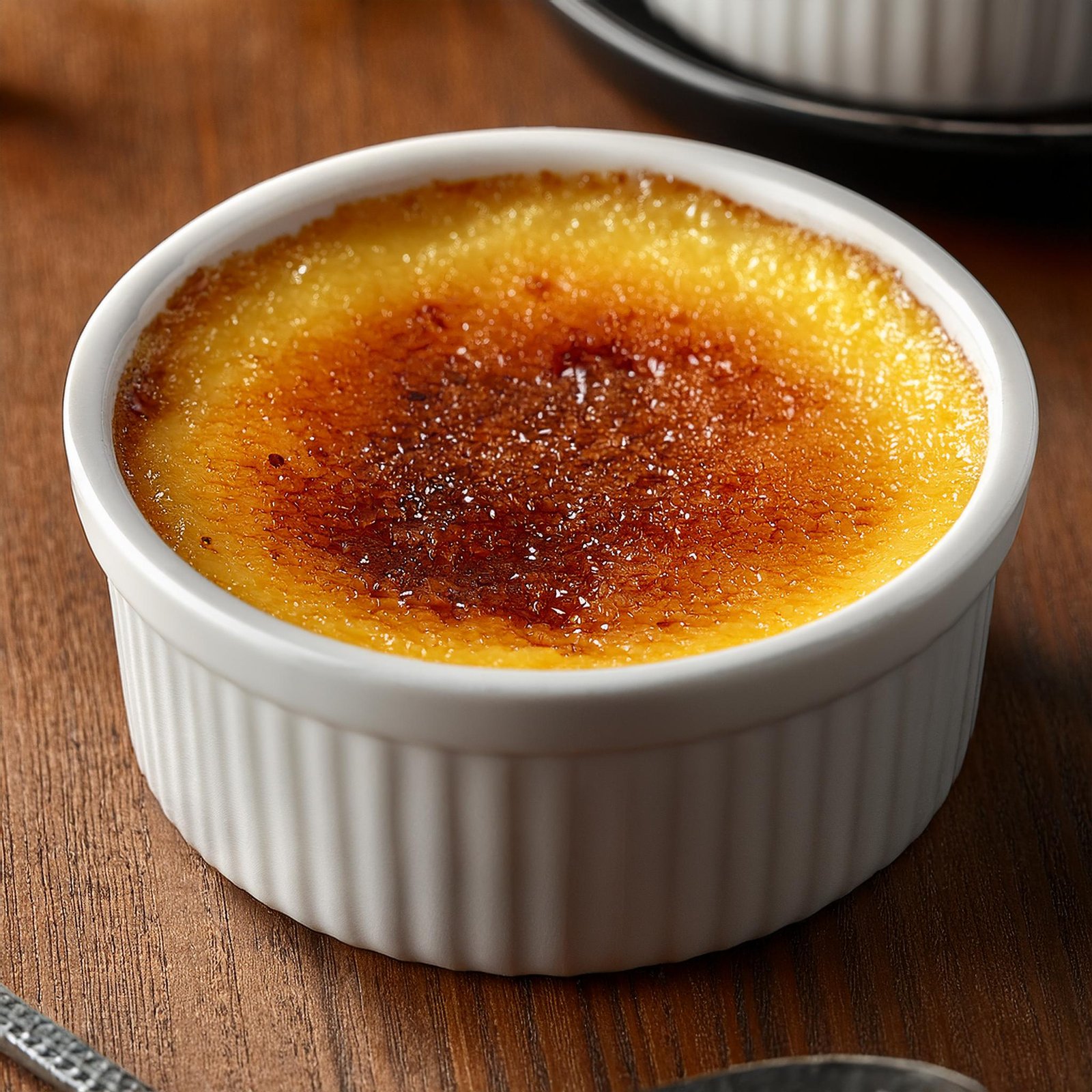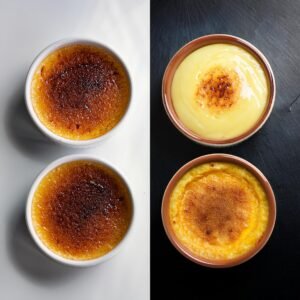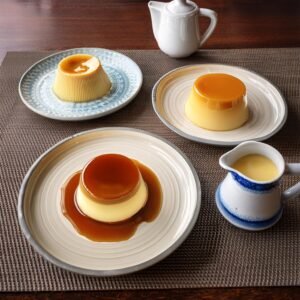Is crème brûlée the same as custard?
Not exactly. While crème brûlée is a type of custard, not all custards are crème brûlée. Custard is a versatile dessert category made from a base of cream (or milk), eggs, and sugar, resulting in a smooth and creamy texture. Crème brûlée stands out for its caramelized sugar topping, giving it a distinct texture and flavor.
What are the 3 types of custard?
Baked Custard: Oven-baked, often in a water bath, resulting in a firm yet creamy texture (e.g., flan).
Stirred Custard: Cooked on the stovetop with continuous stirring, creating a pourable consistency (e.g., crème anglaise).
Steamed Custard: Common in Asian cuisines, steamed for a smooth texture, served sweet or savory.
These methods make custard incredibly versatile for desserts, sauces, or fillings.
Is crème brûlée served warm or cold?
Crème brûlée is traditionally served cold with a warm, caramelized sugar topping. The custard is chilled to ensure a smooth and firm texture, while the sugar is freshly caramelized with a torch or broiler just before serving. The contrast between the cold, creamy custard and the warm, crisp sugar crust adds to its irresistible appeal.
Is crème brûlée like pudding?
No, pudding and crème brûlée are not the same. Pudding achieves its softer, spoonable texture through thickening agents like cornstarch or gelatin. In contrast, crème brûlée is a baked custard that relies on egg yolks for thickening, resulting in a denser, creamier consistency topped with its signature caramelized sugar crust.
Suggested Internal Links :
- What Type of Cream is Best for Crème Brûlée?
Learn how the choice of cream impacts the texture and richness of crème brûlée compared to custard. - How to Make a Unicorn Cake?
Explore creative cake-making tips that involve custard-based fillings for added flavor. - Small Batch Chocolate Chip Cookies Recipe
Pair these cookies with custard or crème brûlée for a delightful dessert combination. - What’s the Secret Ingredient in Vanilla Pudding?
Compare the foundational elements of pudding with those of custard-based desserts. - Garlic Parmesan Chicken Pasta
Discover savory dishes that might benefit from custard-like sauces or textures.
Table of Contents
Conclusion
Crème brûlée and custard, though both built on a foundation of eggs, cream, and sugar, each deliver distinct experiences in texture, flavor, and presentation. Crème brûlée captivates with its rich, baked custard base crowned by a crisp, caramelized sugar topping, adding a touch of elegance and contrast. Custard, on the other hand, showcases its versatility through a variety of preparations—baked, stirred, or steamed—each offering a unique texture and use, from desserts to sauces.
Understanding the differences between crème brûlée and custard — from their textures and cooking techniques to their flavors — allows us to appreciate the artistry behind each dessert. Crème brûlée offers a unique experience with its crackly, warm sugar crust over a chilled, smooth custard. Meanwhile, custard, in its many forms, is a foundational element in cuisines worldwide, enjoyed as a dessert, sauce, or filling.
Whether you’re savoring the elegance of a perfectly torched crème brûlée or the comforting creaminess of a traditional custard, these desserts are testaments to the magic of simple ingredients coming together with precision and care. So, next time someone asks, “What’s the difference between crème brûlée and custard?”, you’ll not only have the answer but also a deeper appreciation for these timeless treats.
Craving more tasty recipes? Make sure to follow us on Facebook , Instagram, Pinterest, and Twitter for daily updates and kitchen inspiration!



